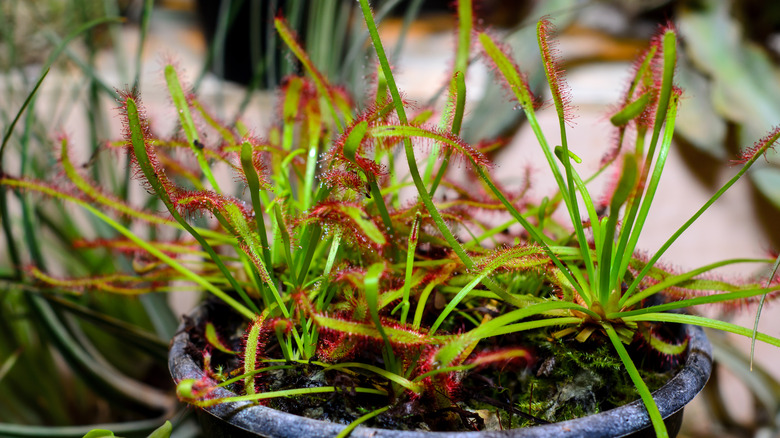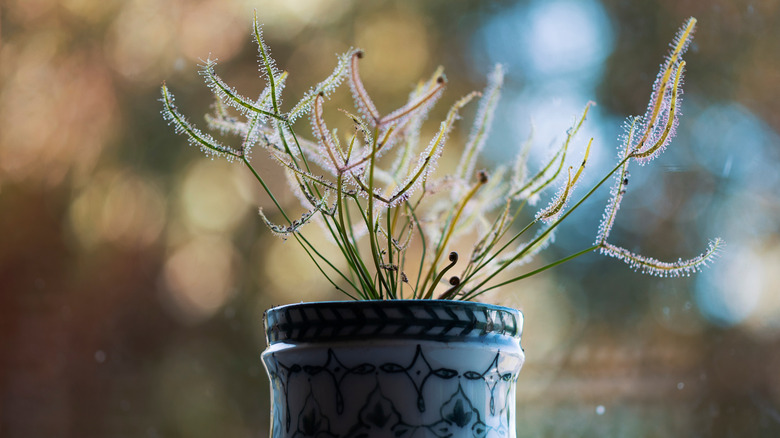Grow The Adorable Cape Sundew With Your Houseplants For Natural Pest Control
Some houseplants can absorb the moisture in your bathroom, others waft sweet fragrances that we love but pests hate, and then there's the cape sundew (Drosera capensis), which devours intruding insects. This tropical plant is native to South Africa, but thrives as a container plant in various places. You can add this gorgeous carnivore to your indoor collection as a means of natural pest control.
Cape sundew feasts on gnats, fruit flies, house flies, and mosquitoes. Sprouting from its light green leaves are red tentacles. These tentacles move around and have bulb-like spheres on the ends that excrete a sticky insect-trapping substance. It's how the cape sundew traps and devours its prey. The leaves can even curl inward to capture larger bugs. Place the killer plant on the kitchen windowsill, front porch, or balcony to help keep these flying pests away. There's no need to buy pesticides or make homemade concoctions. You don't have to have green thumbs to be on cape sundew's good side, either. It is an easy plant for gardeners to grow in a container or terrarium.
How to care for cape sundews
Cape sundew is one of the easiest insect-eating plants to grow. It's a carnivorous plant that thrives in warm climates similar to its native environment, but it can handle a few days of frost and severe heat up to 100 degrees Fahrenheit. That might be thanks to its hearty roots. While mostly started as a seedling, you can grow cape sundew from seed or clippings. Just sprinkle a few seeds on top of the soil and water, no need to bury them. You can also propagate leaves from one plant and grow multiple to expand the live trap for the flying critters. Cape sundew grows fast, and while its spike-covered leaves are quite show-stopping, so are its flowers. From late summer to autumn, you might spot a purple bloom. The tall stem and vibrant petals distract from the deadly leaves.
Best of all, it doesn't take much for your plant to thrive. The cape sundew is adaptable to various soils, even those low in nutrients. Preferably, a mixture of equal parts peat or sphagnum moss and sand creates the ideal environment. Place it in an area with at least a few hours of sunlight and keep its soil moist. This carnivore likes water, so don't be stingy with the hydration. It is best to keep the potted sundew in a tray filled with water low in salts and minerals, like distilled or rainwater. So it might help to DIY your own rain barrel. Then, you can have a flourishing cape sundew as a protective houseplant.

